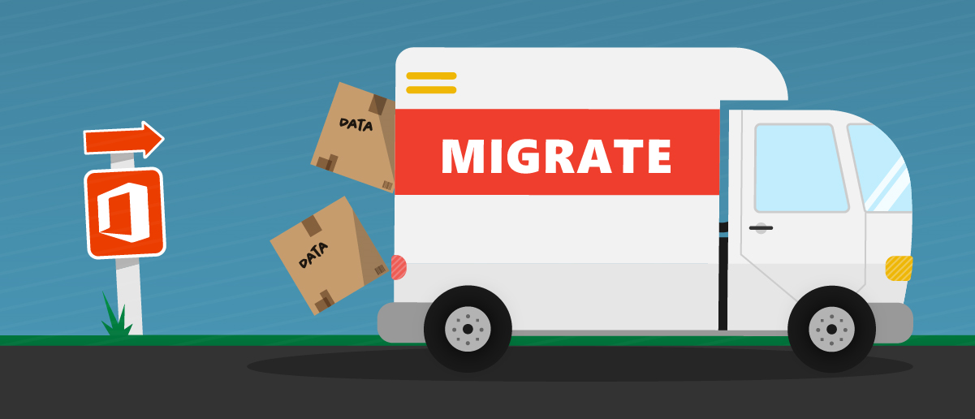Editor’s Note: This blog post was updated on September 22, 2022.
Remote work is at the heart of many organizations today. The rise of this new standard has pushed business leaders to be innovative in allowing their employees to work without the familiar office tools to help them.
While the past has seen file servers and on-prem file shares, the cloud environment has delivered a new way of working and collaborating. Today, with modern collaboration platforms, users are promised data accessibility and convenient file sharing without the need to connect to the company network.
SharePoint Online, one of the dynamic business platforms in the Microsoft 365 suite, bears these cloud benefits and much more. Empowering teamwork with its collaborative features, pushing for better communication with its intranet capabilities, and providing security, visibility, and control to sensitive information with its governance policies, it has created a whole new world of remote collaboration.

But you may have heard of all this already. In fact, you may have even given some thought to migrating to the platform. It’s probably why you’re reading this blog post—you’ve decided, and now you’re looking for a guide to ensure the success of your migration.
Before we get to that, let’s ask some serious questions first.
Are You Ready to Migrate?
Migrating to a new platform doesn’t happen every day, so it’s reasonable to be a bit unsure of how to handle this big change in the best way possible. It’s critical that it turns out successful since you will be building your new work system in a new environment.
It is then absolutely necessary that disruptions are kept to a minimum and that no important data is lost, deleted, or compromised. You will be dealing with all the files, documents, and other data that your users use every day to work, and they’re all crucial to your business continuity.
But there are a ton of factors that can affect your migration performance. Network infrastructure, file size, migration time, throttling—understanding all of these will be key to a successful SharePoint Online migration.

SharePoint Online Migration Best Practices
Let’s move on to your migration preparations. Here are six things you need to remember for an effective SharePoint Online migration:
1. Scan your source and plan accordingly.
No matter your source—file servers, third-party storage solutions, or third-party cloud storage apps—considering your current environment will help you understand your data better, which in turn will help you plan your migration more effectively.
Know where exactly your data is located, who is using it, whether you need it, or if it’s highly sensitive. In addition, considering the file name and path length will allow you to prepare your data better for your new SharePoint environment.
By understanding how your users have been using your content from your source, you can plan for appropriate data structures and workflows to help your end users have a positive experience.
Then, based on your discovery, assess your priority. When planning, not only should you consider the best migration approach, but you should also choose the right tool. Not every tool can help you with your migration needs, so using the most comprehensive tool will be beneficial to your success.
Fly now offers tenant-level discovery for a simplified and less time-consuming discovery experience. Select your tenant, choose your workspace, and run your discovery. When the scan is complete, you will see a dashboard view for each selected workspace as well as a details page where you can export, filter, and search through your findings. Request a demo to see how it works for yourself.
2. Pack Your Content Correctly
One of the most important steps in SharePoint Online migration is planning for the right “package.” It’s not advisable to migrate big chunks of data all at once as it will cause unhealthy throttling during the migration. In contrast, small packages will slow your migration down.
Finding out the right size of content to be moved and looking into moving certain types of files first will be key.
Microsoft recommends packaging at least 250 files per transfer to improve throughput. For the size, a minimum of 100 MB and less than 250 MB per package is recommended.
Keep in mind that it’s faster to migrate files with a larger size than smaller ones. Files also migrate faster than objects and list items.

3. Prepare Your SharePoint Migration Destination
Before you migrate, ensure that your destination is ready. If you classify your content pre-migration and use the governance tools that Microsoft 365 offers, your data will be securely governed, information will be appropriately protected, and you’ll be able to manage the risks right from the start.
And so, to better utilize the controls provided in SharePoint Online, you will need to plan and enforce your governance plan ahead of time.
4. Invest in Change Management
To better prepare your destination, taking the time to consider change management will be beneficial. Not only will this result in a higher adoption rate, but it will also help improve your business processes.
While it’s great to think about your old workflows during the discovery and planning phases, you should also utilize the change and the innovations that come along with it to improve your system. Find the balance between leveraging tried and true systems while building improved ones.
Luckily, SharePoint Online has various tools to help you achieve this. Furthermore, it can be integrated with other Microsoft 365 platforms which will give you tons of opportunities for workflow improvements, so be sure to research about those!
5. Do Pilot Tests
No matter how great you think your plan is, there will be other factors that may affect the final performance.
Pilot runs will ensure that if there are gaps in plans they can be prevented and fixed before the actual migration. Finding data sets that mirror your wave migration will be important for testing how effective the plan is going to be.

6. Conduct Migration Timeline and Process Accordingly
To have the highest throughput, it is best to plan your migration during off-peak hours, which are usually nights and weekends in your region’s time zone. Attempting to migrate to SharePoint Online during peak hours will only result in throttling.
Additionally, Microsoft encourages that you do not submit more than 5,000 migration requests at a time as over-queueing will slow your migration down. Finally, make sure to complete your migration tasks before uploading a new request.

